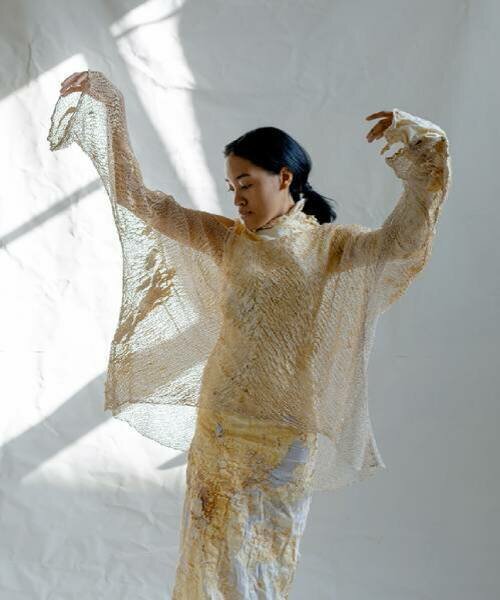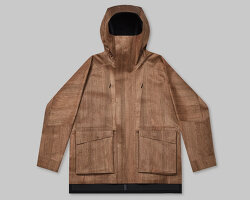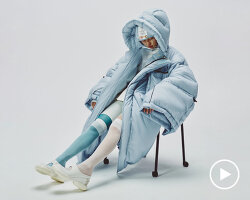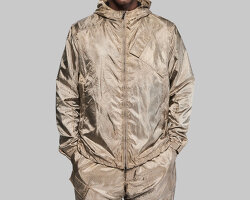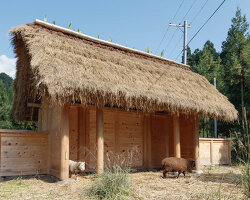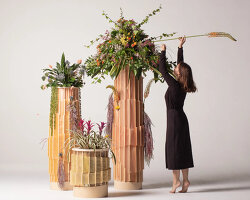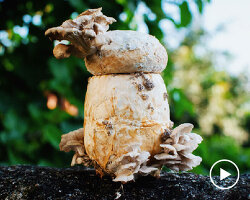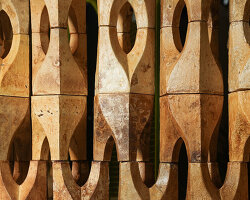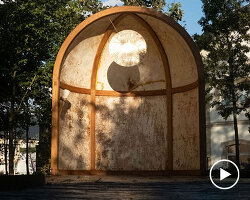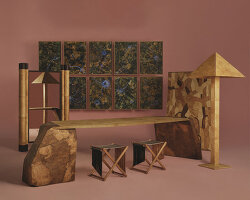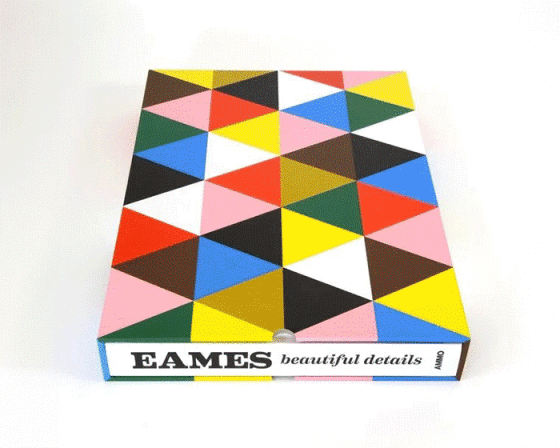dasha tsapenko co-creates with fungi for her wedding dress
Designer and researcher Dasha Tsapenko celebrates her wedding with a gown she grew herself. Cultivated from vintage linen lace and mycelium, the fashion statement reinterprets Ukrainian wedding attire and rituals, melding the handmade and tradition with innovative biotechnology. Analyzing both ancient and modern wedding attire traditions from her home country, she scoured local flea markets and craft fairs to collect traditional linen lace. Tsapenko’s wedding dress experiment, a new expression of these traditions, set forth a new wedding ritual — growing and tailoring garments in collaboration with nature and then burying them in a special place once their mission is fulfilled.
The mycelium dress takes on a unique life cycle. Unlike modern wedding dresses often stored or sold after use, this biodegradable creation can be buried in the ground, while the mycelium’s natural decomposition process initiated by mushroom spores allows the dress to return to nature. The designer emphasizes the value of this ephemeral item, suggesting that memories should be preserved in the heart, not the closet.
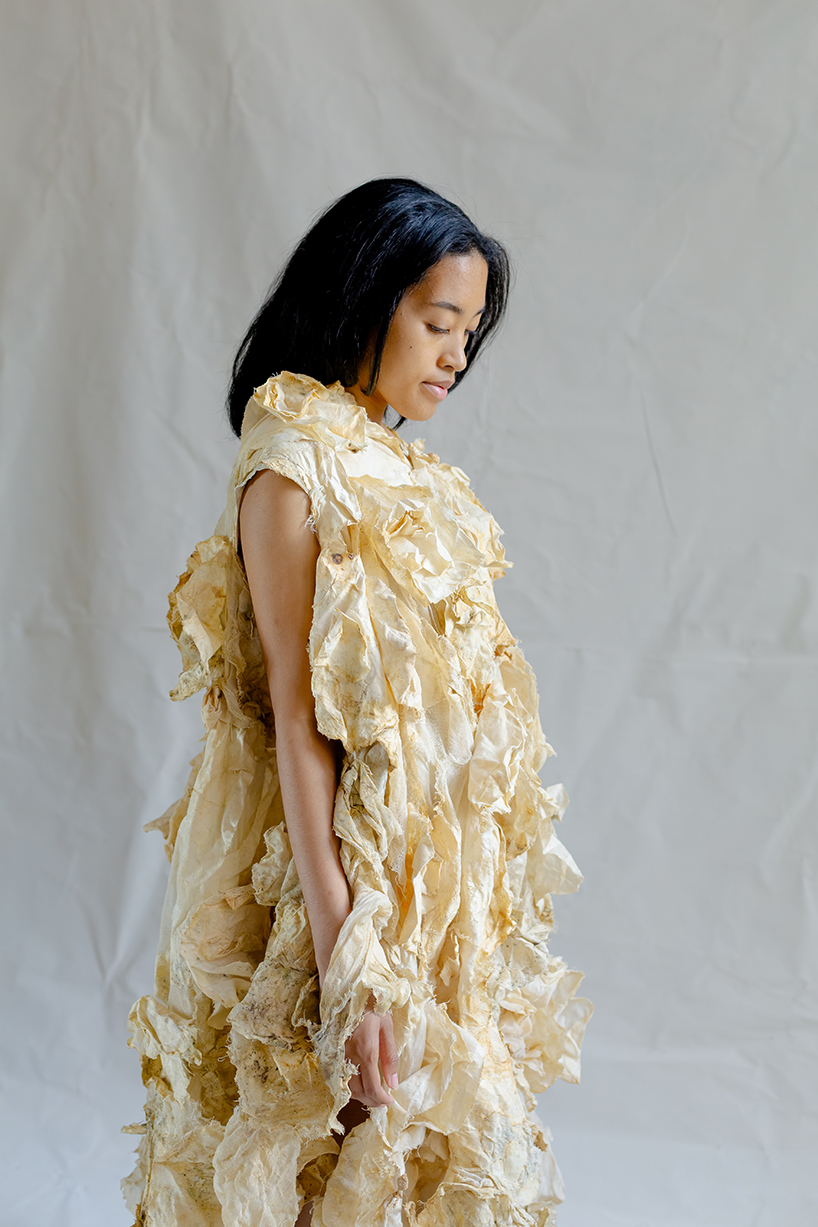
made of cut-offs of linen gauze that were layered and inoculated with fungal spores | all images by Maria Kytaieva
uniting ukrainian tradition with biotechnology
Following her visits to markets in villages and cities across Ukraine, the chosen fungal species thrived on linen, happily feeding on it. Designer Dasha Tsapenko deconstructed and sterilized the lace pieces which were then placed in a controlled, nutrient-rich environment and seeded with spores, initiating a two-week growth period. The mycelium’s biomass fused the lace fragments into a solid fabric, with the final garment showcasing a natural color spectrum from milky white to beige-brown, and an uneven texture. It took another week to tailor the dress according to the bride’s figure.
The collaboration with fungi, a co-author in this creative process, results in a soft and skin-friendly texture. Mycelium stops its growth and stabilizes after being removed from the nutrient environment, and as such, the degree of growth and the necessary density of the material are determined by the designer. Tsapenko conducted a personal ‘crash test’ during her wedding ceremony, exposing the dress to sea water and damp sand, and the material proved durable, with no change after exposure to the natural elements. This project marks the beginning of her plans to establish a bio-atelier for growing couture garments on demand — its potential ranging from dense to delicate textures, using various natural cellulose-based fibers, both raw and processed.
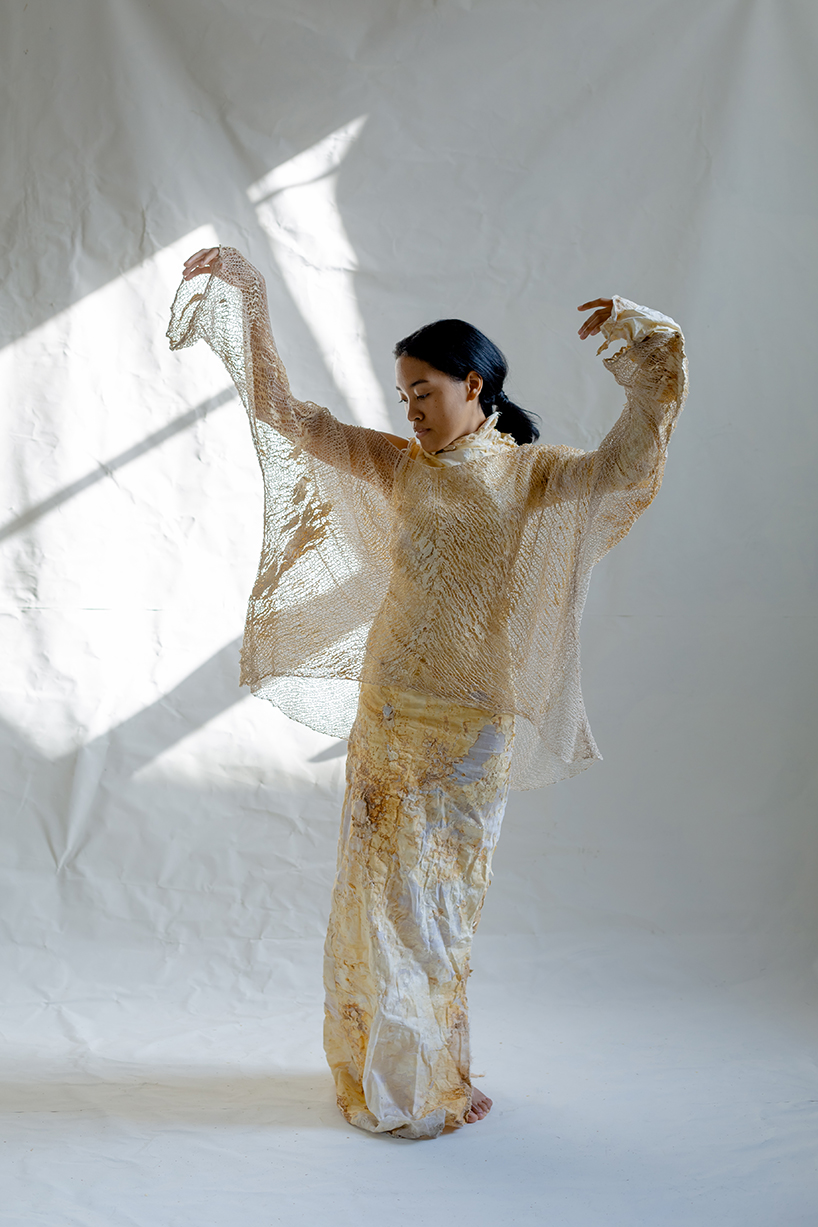
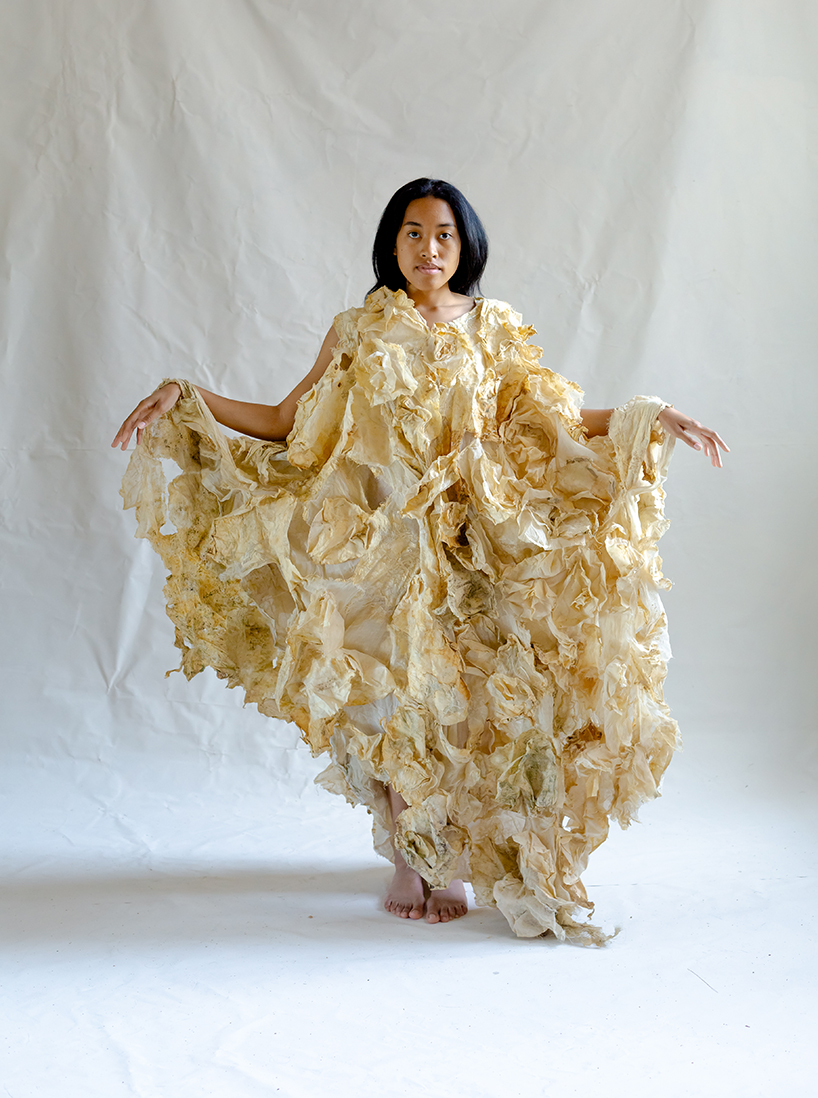


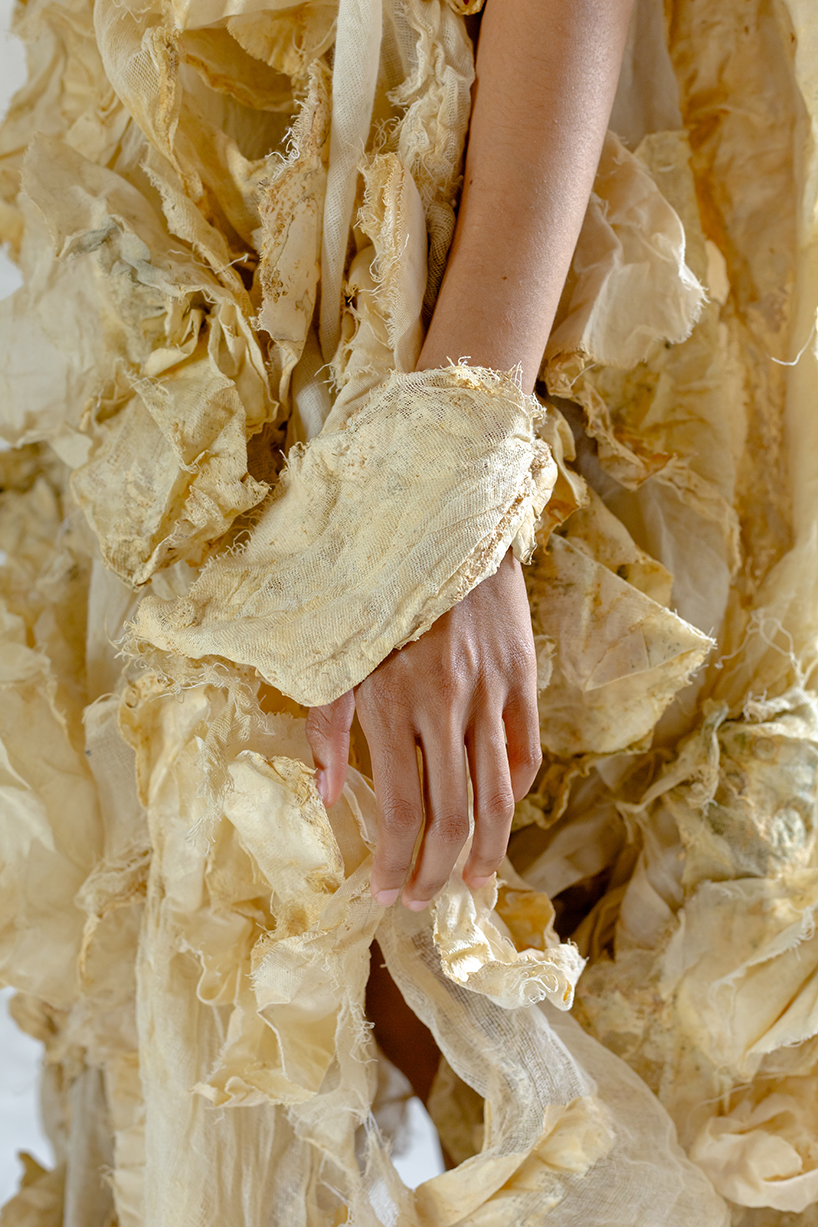
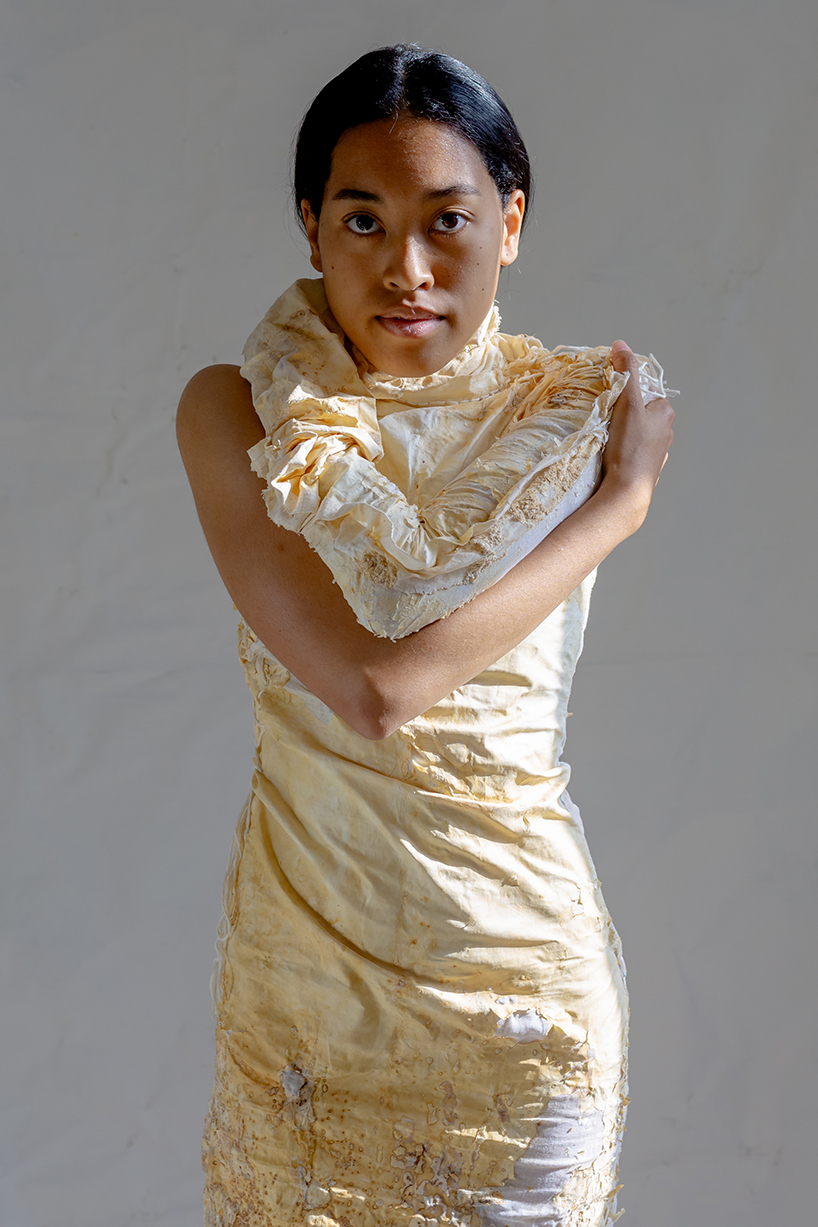
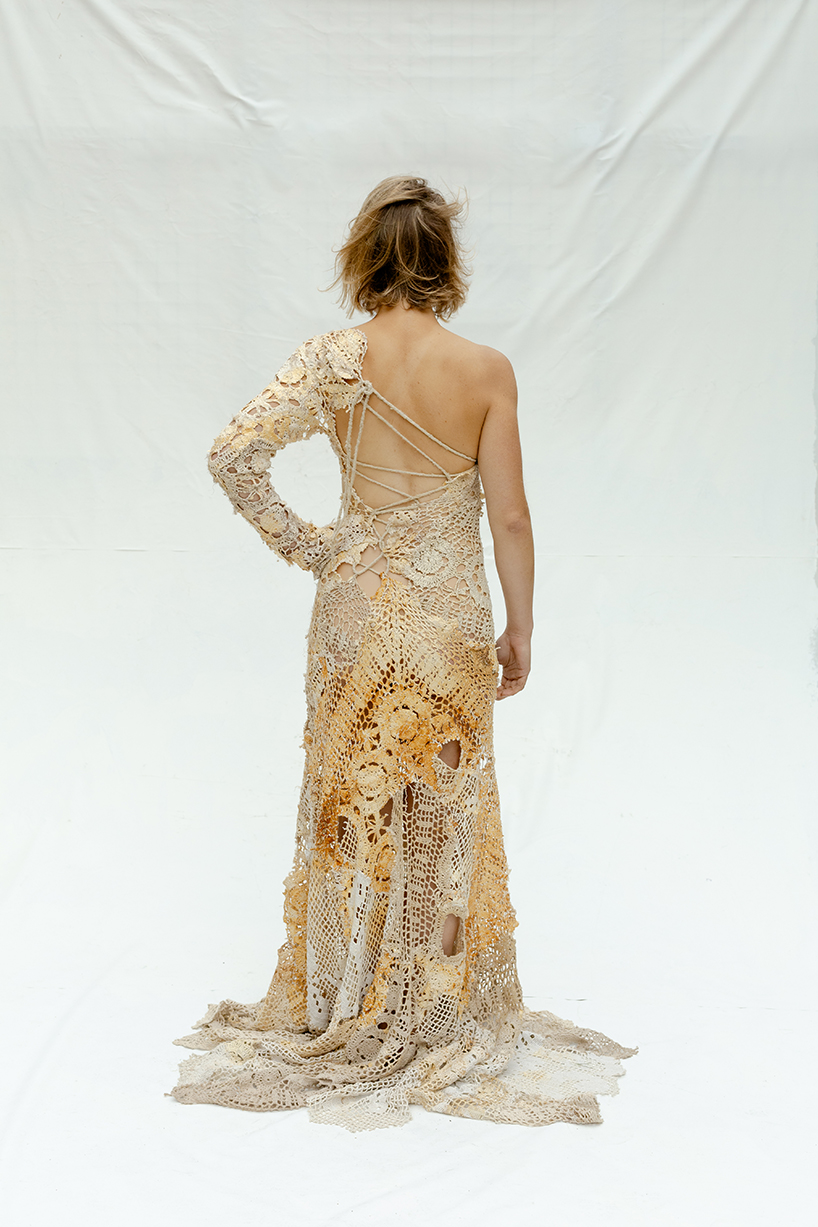




Dasha Tsapenko tailoring her wedding dress from vintage linen lace and mycelium
project info:
name: Wedding Dress Grown from Mycelium
designer: Dasha Tsapenko
designboom has received this project from our DIY submissions feature, where we welcome our readers to submit their own work for publication. see more project submissions from our readers here.
edited by: ravail khan | designboom
